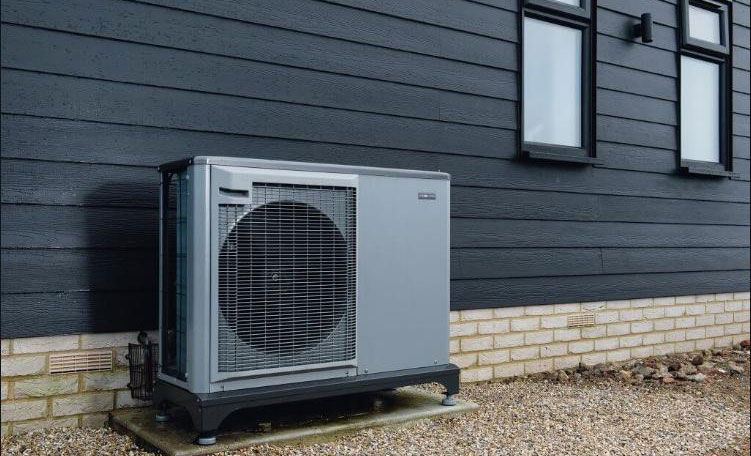Types of Heat Pumps – For all climates, heat pumps are an energy-efficient option for furnaces and air conditioners. Heat pumps, like your refrigerator, use power to transfer heat from a cold to a warm place, cooling the cool space and warming the warm space. Heat pumps transfer heat from the chilly outdoors to your warm home throughout the heating season. Heat pumps transfer heat from your home to the outdoors during the cooling season. Heat pumps can efficiently produce the appropriate temperature for your house since they transfer heat rather than generate it.
At Linquip, you will be able to find all the necessary information about heat pumps. You can always count on Linquip’s experts to provide you with expert advice whenever you need a heat pump. Take a look at Linquip’s article titled “What is a Heat Pump and How Does It Work?” to get a better understanding of these industrial devices.
Have you had any experience with heat pumps previously? Linquip’s selection of Heat Pump Products can help you find the heat pump that’s right for your needs. Have you got a particular type of heat pump you need in mind? Linquip offers no-cost access to all Heat Pumps for Sale that are available in the market. Further, if you are interested in finding out the price of Heat Pumps that are available in the market, with Linquip, you can submit an inquiry/request for quotes to all the Heat Pump Suppliers and Companies for free.
⇒ View a Comprehensive List of Heat Pumps for Sale and Their Suppliers ⇐
What Are Heat Pumps?
The energy required to adjust the temperature of the air is one of the most expensive aspects of both heating and cooling. If it’s 90 degrees outside, you’ll need to expend energy to chill the space by lowering the temperature of the air within. Winter temperatures are the polar opposite.
One option to cut the cost of energy for this operation is to choose a nearby place that is cooler in the summer and hotter in the winter. A temperature shift of 10-15 degrees rather than 20-30 degrees may be required in this case. By taking advantage of temperature changes across habitats, heat pumps may achieve this transformation.
Consider the heating system in the winter. A heat pump may take advantage of the higher temperatures deep beneath and transfer that heat to a residence above ground.
This procedure still necessitates the use of an external power source. Because temperatures underground do not change as much as they do in the open air, this procedure reduces the amount of energy required to heat the air.
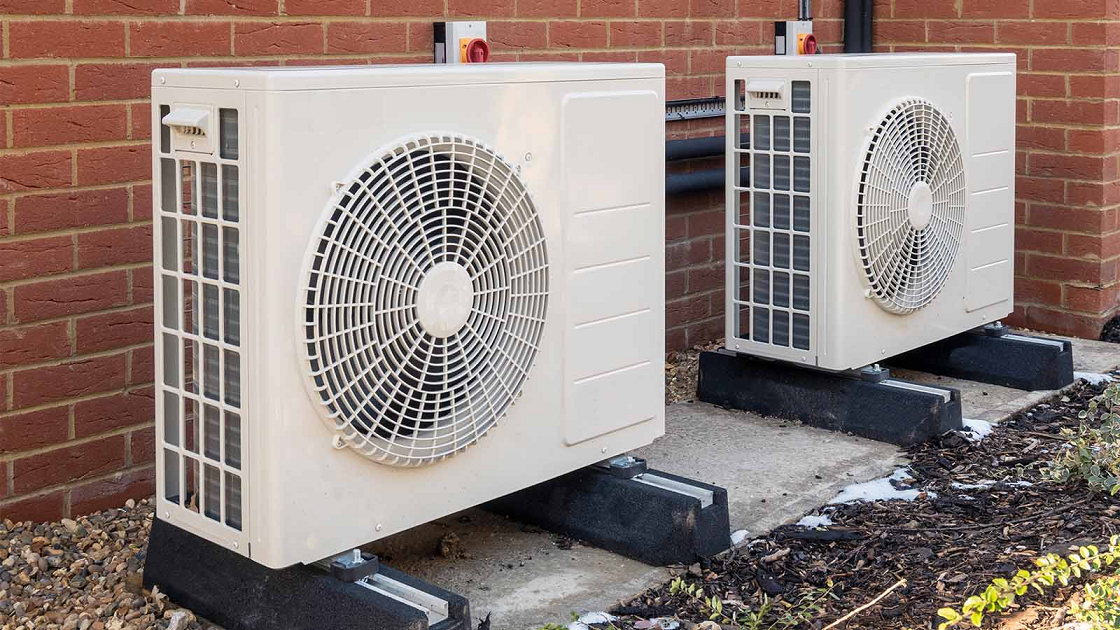
Working Principle of a Heat Pump
Heat energy is naturally transferred from warmer to colder environments. On the other hand, a heat pump may reverse this process by taking heat from a cold environment and releasing it into a warmer one. This technique does not preserve heat and requires some external energy, such as electricity. Heat pumps are vapor-compression refrigeration devices that are tuned for high efficiency in both directions of thermal energy transfer in heating, ventilation, and air conditioning (HVAC) systems. These heat pumps can be reversible, meaning they can heat or cool the interior area either way.
Heat pumps are utilized to move heat since they consume less high-grade energy than is released as heat. The majority of the energy for heating comes from the outside environment, with only a small percentage coming from electricity (or some other high-grade energy source required to run a compressor). The heat transferred by electrically-powered heat pumps can be three or four times greater than the electrical power depleted, giving the system a coefficient of performance (COP) of three or four, compared to one for a traditional electrical resistance heater which produces all heat from input electrical energy.
Heat pumps employ a refrigerant as an intermediary fluid to absorb heat in the evaporator and then release heat in the condenser, where the refrigerant condenses. The refrigerant runs through insulated pipes between the evaporator and the condenser, allowing for efficient thermal energy transmission over long distances.
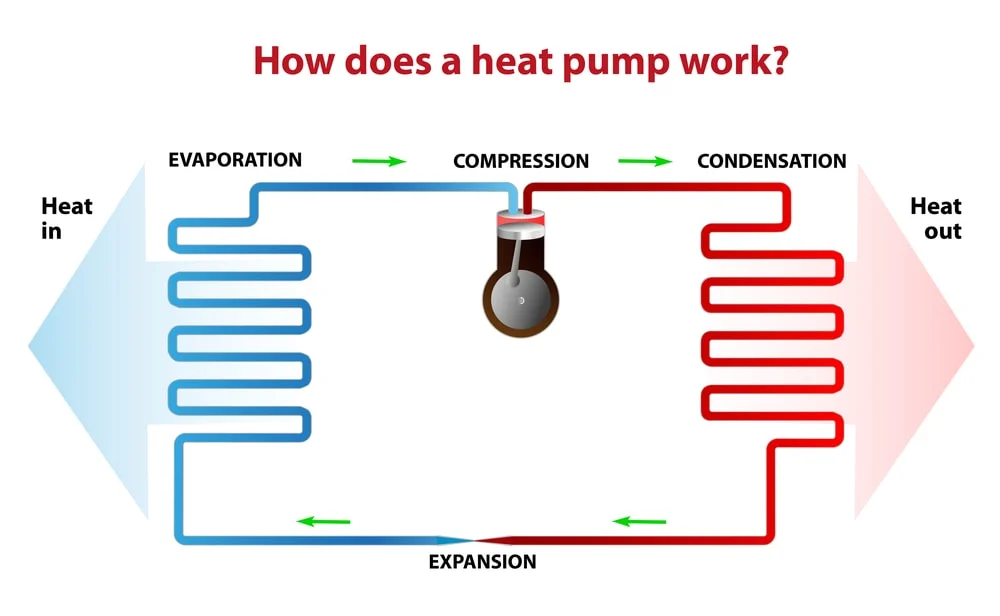
Heat Pump Types
Several kinds of heat pumps are used in our modern heating and cooling industries. In this article, they will be categorized into three major categories:
- Air to air
- Underground/Underwater
- Hybrid
1. Reversible Heat Pumps
Reversible heat pumps may provide both warmth and cool in the same two conditions. They use exterior pipes to absorb heat and discharge it into the internal environment during heating. They collect heat from the inside and release it into the outer environment during cooling.
The reversible option is available on most heat pump models. Depending on your environment, you may require a bidirectional pump or one that is exclusively meant to heat the interiors. Because reversible pumps are more expensive, money may play a role in determining which system is best for you.
However, other systems such as those that are subterranean or underwater, need considerable installation. One part of these systems must be buried deep underground or submerged at the bottom of a neighboring body of water. Installing a reversible system to save reinstallation charges later on may be more cost-effective in the long term.
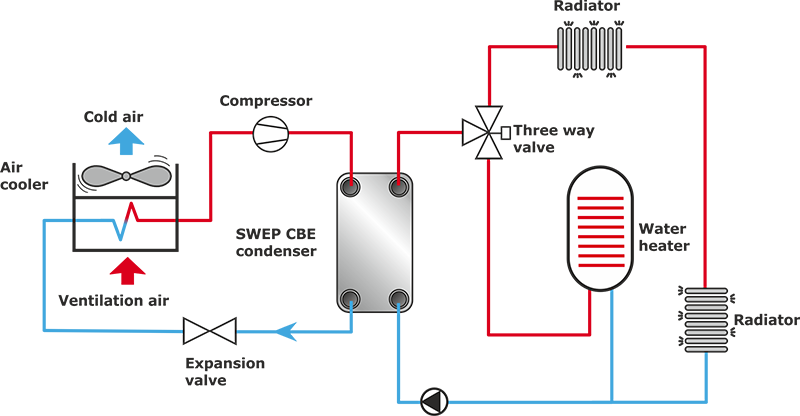
2. Solid State
Solid-state heat pumps exist, albeit they are not often used to heat buildings. The characteristics of strong magnetic fields on specific metals are used in magnetic-based heat pumps. Metals like iron or gadolinium can be warmed by the fields by up to ten degrees Fahrenheit. If the metal is subsequently placed in an environment without the field, the additional heat will be released into the atmosphere. This method is less energy efficient than systems using liquid or gas as fuel.
Thermoelectric pumps transmit heat between two locations by using voltage. These systems are also inefficient, and their usage has been limited to modest cooling equipment. Thermoacoustic devices, on the other hand, have found little utility outside of cryogenic operations. To transport heat energy, these devices utilize relative pressure changes induced by acoustic waves.
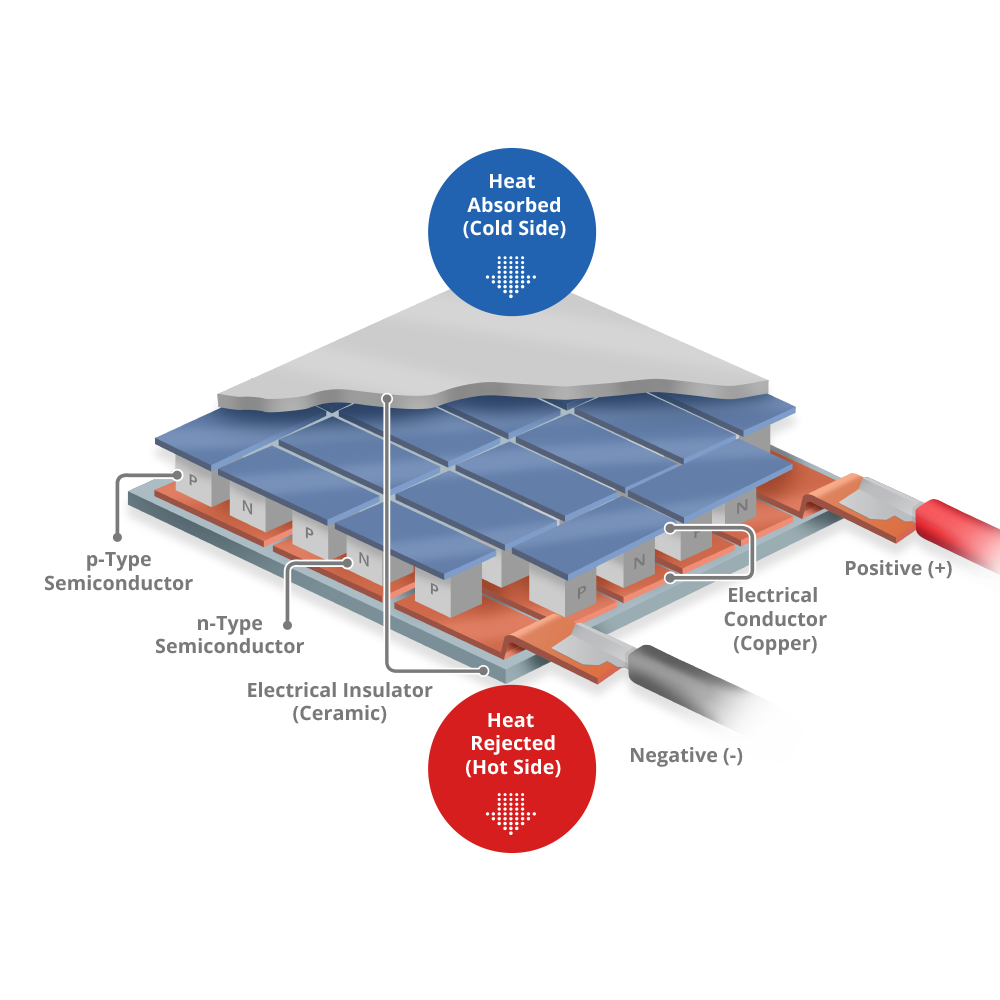
3. Air To Air Heat Pumps
Air-to-air heat pumps, as the name indicates, transfer heat from the open air outside to the facility’s interior. They come in reversible systems that can both heat and cool the air within. Systems that employ vapor-compression or hot water for radiators or direct human use are the most frequent.
The type that uses vapor compression works in the same way as refrigerators and air conditioners do. They entail installing a unit within and connecting pipes to an above-ground unit outside. Reverse Cycle Chillers operate similarly to conventional air-to-air pumps, except instead of vaporized refrigerant, they cycle water. The water can then be circulated through internal radiator systems once it has been heated.
Air-to-air and radiation heating systems are both more energy-efficient than other types of heating. Because they are above ground, they are also less expensive to install than other types of heat pumps. Because heat pumps do not need the combustion of fossil fuels, they may be healthier. As a result of the combustion process, these compounds might emit carbon dioxide or nitrogen oxide.
For establishments in generally moderate areas, air-source heat pump systems might be perfect. In all except severely cold conditions approaching freezing temperatures, they can offer adequate heat.
There are a few disadvantages to utilizing air to air heat pumps. While they perform well in moderate areas, they don’t work well in severe ones. When the temperature dips below freezing, the heating capacity is reduced to a bearable level. A type of resistive or oil-based emergency heating is included in most systems. Emergency heating, on the other hand, is neither cost-effective nor suited for long-term usage.
Because the systems are above ground, they are susceptible to obstruction. Airflow and interior working parts can be harmed by leaves, grass, snow, and ice. Filters and defrosters are frequently required in above-ground systems.
Air-source heat pump systems might be more expensive upfront than other types of space heating. They can, however, survive for twenty years or more and save money in the long term. The time it takes them to recoup their upfront investment is determined by the cost of electricity and oil in the area.
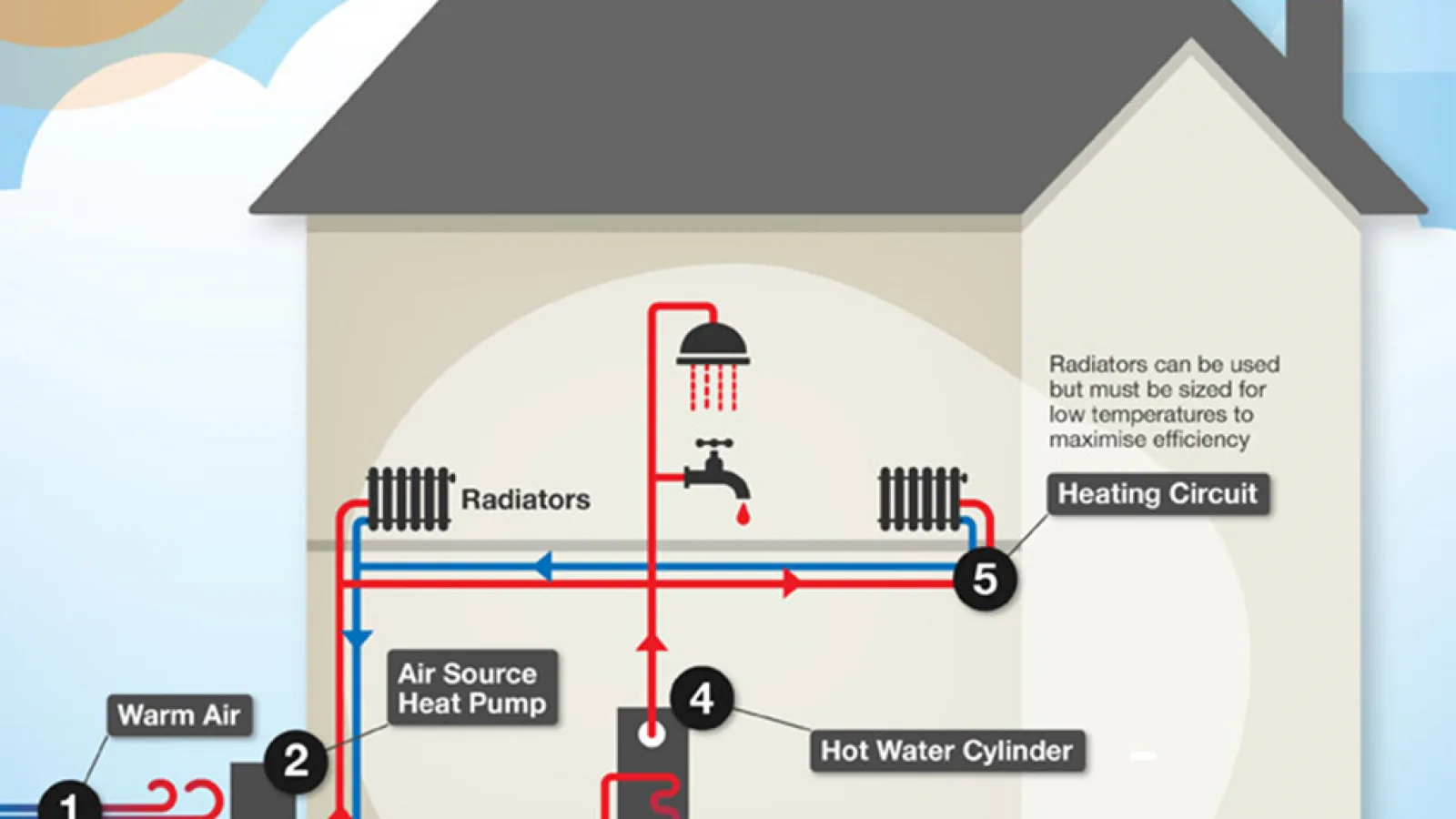
a. Mini Split Heat Pump (Ductless)
The mini-split heat pump is an air-to-air system designed for homes without ductwork. They’re commonly used in retrofitting buildings that formerly had water heaters or radiators. Unlike standard air-based heat pumps, mini-splits employ small apertures carved into the side walls to link the exterior unit to the duct system. Up to fifty feet away from the outside unit, the inside units can be installed on ceilings, walls, or the floor.
Up to four internal units can be linked to one mini-split external unit. Effective zone heating and cooling are possible because each internal unit may be regulated individually. Installing the incorrectly sized unit, on the other hand, might result in wasted energy and ineffectively heated rooms.
While the visible tubing and inside unit may be unattractive to some, mini-splits are more energy-efficient than duct systems. Ducts are infamous for being inefficient, losing a lot of heat before it reaches the vents.
b. Exhaust Air Heat Pump
The Exhaust Air Heat Pump is the last type of air to the air pump. This type, as the name implies, makes use of exhaust from a construction or manufacturing activity. The same evaporation-to-condensation process can be much more effective because the exhaust is often warmer than the surrounding air. This procedure, however, necessitates proximity to constant exhaust.
4. Underwater/Underground Heat Pumps
Deep below and underwater, temperatures do not change nearly as much as they do in the open air. As a result, this type of pump can supply both warmer and colder air more efficiently.
A dual-line system is used by several subterranean and undersea pumps. A primary pipeline will go from an exchange box to the above-ground structure in this variation. A second pipeline will connect the underground/underwater labyrinth to an exchange box. Inside the enclosed heat exchange box, the two pipes will meet. A combination of antifreeze and water can be used in both underground and underwater systems to prevent temperature extremes.
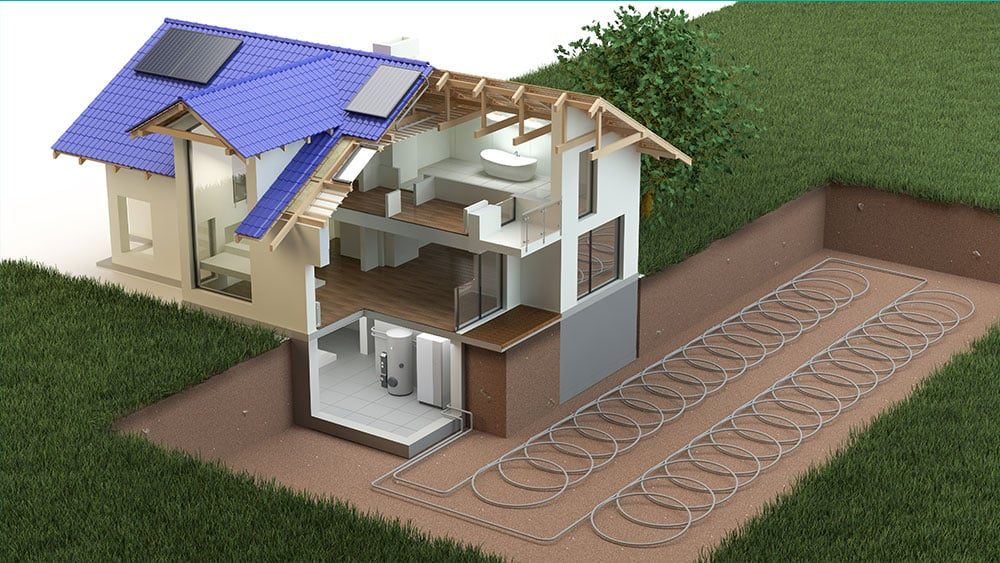
a. Water Source Heat Pumps
Underwater heat pumps may be an alternative for constructions near enough deep water sources. Water-based heat pumps function on the same concept as air-based heat pumps; only they utilize water as the heat exchange medium. They absorb heat from the water to warm the structure’s interior and release heat back into the water to cool it.
Water is also utilized as a refrigerant in certain types, with water flowing through a network of tubes as deep underwater as feasible. The temperature of the water inside the tube will be raised or lowered until it reaches the free-flowing water’s ambient temperature. After that, the water in the tubes is pumped into the structure. In the summer, the water will absorb heat from within the building, effectively cooling it. The water will discharge heat into the cooler interior in the winter.
This technique may be employed in more harsh areas since deep underwater temperatures are reasonably consistent throughout the year. This is a significant benefit over air-based systems, which are limited to mild temperatures.
Underwater systems are less expensive to build than underground systems since no major excavation is required. Underwater technologies, on the other hand, might have far higher upfront expenditures than air-based methods.
Of course, the most significant disadvantage of underwater heat pumps is that they require proximity to a body of water. While exterior wells can be useful, bigger bodies of water with free-flowing water are preferable.
There are two types of underwater systems: closed loops and open loops. Closed loops, like the other types, circulate a refrigerant through a closed conduit. Open loops, on the other hand, gather surface water and transfer it through the system’s interior structure. The heat is subsequently emitted or absorbed depending on the situation. After that, the water is returned to the environment in a different area.
This procedure bears the added danger of mineral deposits inside the line because it deals with plain water from the outdoors. These deposits might obstruct the flow of water and so diminish the system’s effectiveness.
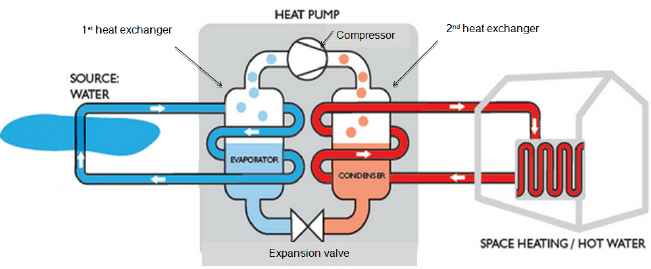
b. Ground Source Heat Pumps
These systems, also known as geothermal heat pumps, employ steady temperatures deep beneath to heat and cool structures. These, like deepwater pumps, frequently employ water as the refrigerant and do not require condensation or evaporation. There are, however, typical condensation and evaporation variants.
The water refrigerant type, like the deepwater ones, relies on a network of pipelines buried deep down. The water circulates through the pipes, releasing and collecting heat until it reaches the ground’s ambient temperature. The water is then pumped into the above-ground structure, where it is used to remove or absorb heat.
While deepwater pipes are normally horizontal against the water’s bottom, subterranean pipes come in a variety of shapes and sizes. Pipes can be laid in vertical loops when horizontal space is restricted. Several deep holes have been dug into the earth. A chain of deep vertical u-shapes is formed by the pipes. To improve temperature exchange, each of the drill holes can be filled with groundwater or another medium.
The pipes can be organized in a horizontal network of u-shapes sitting on a single plane below the frost line where there is greater room. The pipes may be covered by excavating the earth and then replacing it.
Horizontal pipes can also be radially arranged using a technique known as horizontal directional drilling. This method is preferred because it can be laid without disrupting driveways or other surface characteristics.
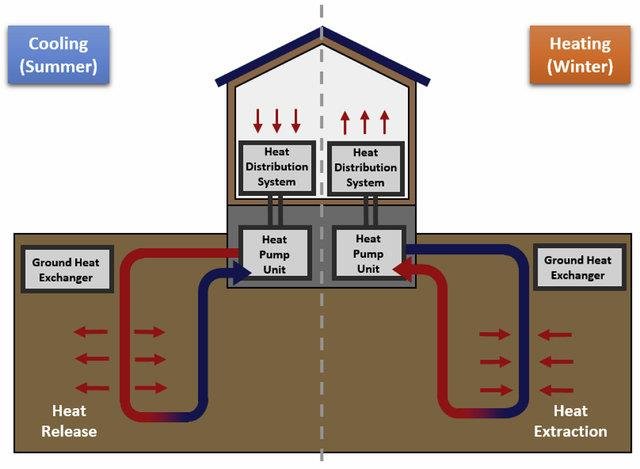
5. Hybrid Heat Pumps
The major issue with pure heat pump systems is that they don’t provide enough heat in really cold locations. At or below freezing temperatures, air to air pumps are unable to function properly. As a result, systems must rely on expensive emergency heat in the event of extreme cold.
Cooling is far more efficient with geothermal and underwater systems than heating. Deep underground/underwater temperatures can reach fifty to sixty degrees Fahrenheit. That temperature is far more effective in cooling a hot room than it is at heating a cold place.
As a result, a variety of hybrid heat pumps are available to help with the heating process. These pumps function as air-source heat pumps that employ additional energy sources to create more heat for release indoors. Here are several examples:
- Natural gas is used as the heat source in gas-fired heat pumps, which provide additional warmth in chilly locations. This variant may also supply both heating and cooling by using an ammonia-water refrigeration system.
- Solar-Powered Heat Pumps may drive and heat the system using solar panels as a source of power. Additionally, they may utilize direct sunshine as a source of heat.
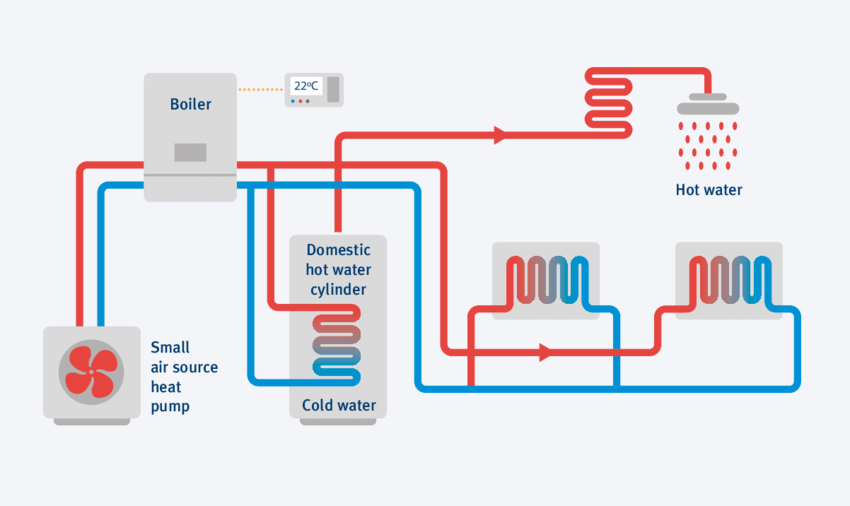
Heat Pump Advanced Features
The performance of heat pumps is being improved by several innovations.
Unlike normal compressors that can only work at full capacity, two-speed compressors enable heat pumps to run close to the heating or cooling capacity required at any given external temperature, conserving energy and minimizing compressor wear. Heat pumps with two speeds work well with zone control systems. In zone control systems, which are usually found in bigger homes, automatic dampers allow the heat pump to keep different rooms at different temperatures.
Indoor fans (blowers), outdoor fans, or both are supplied with variable-speed or dual-speed motors in some heat pump types. These fans’ variable-speed settings attempt to maintain the air circulating at a suitable pace, reducing cool breezes and increasing energy savings. It also decreases the amount of noise created by the blower while it is running at full power.
In high-efficiency heat pumps, a desuperheater recovers waste heat from the cooling phase of the heat pump and uses it to heat water. A heat pump with a desuperheater may heat water 2 to 3 times faster than a standard electric water heater.
The scroll compressor, which comprises two spiral-shaped scrolls, is another improvement in heat pump technology. One remains still while the other circles around it, compressing the refrigerant by pushing it into smaller and smaller spaces. Scroll compressors have a longer operational life and are quieter than traditional piston compressors. Compared to conventional heat pumps with piston compressors, heat pumps with scroll compressors deliver 10° to 15°F warmer air while in the heating mode, according to some sources.
Although most heat pumps employ electric resistance heaters as a backup for cold weather, heat pumps can also be installed with a gas furnace to assist the heat pump, which is frequently referred to as a dual-fuel or hybrid system. This assist alleviates the heat pump problem of running inefficiently at low temperatures and minimizes its power consumption. Because few heat pump manufacturers combine both sources of heat in a single unit, these arrangements are frequently two smaller, side-by-side conventional systems using the same ductwork.
Compared to a combustion fuel furnace or a heat pump by itself, this type of system is also more cost-effective. The actual amount of energy saved depends on the relative cost of the combustion fuel compared to electricity.
The Future of Heat Pumps
Heat pumps may become the heating system of the future due to their numerous advantages. It can transfer heat from a low temperature to a higher temperature for a tiny amount of electricity, which may be used to operate radiators and heat the water in a boiler. Heat pumps may be installed as standard in future homes, either to improve efficiency or to provide all of their heating requirements.
Because it is also tied to the government’s Renewable Heat Incentive and can give a return on investment equivalent to what the Feed in Tariff promised for solar and wind power installations before the scheme expired in 2019, many homeowners view it as a feasible source of cheaper energy.
Conclusion
Unlike furnaces or air conditioners, heat pumps are energy-efficient for all climates. Heat pumps, like your refrigerator, use power to transfer heat from a cold to a warm place, cooling the cool space and warming the warm space. Although the many types of heat pumps have been briefly mentioned here, a more in-depth examination of each is required to properly comprehend the benefits and drawbacks of each technology.
You are encouraged to visit Heat Pump for Sale on the Linquip website, where you can find numerous companies and suppliers of heat pumps that can effectively assist you in finding appropriate heat pump systems based on your application and demands.
FAQs about Heat Pump
1. Can Heat Pumps Produce Enough Heat for an Entire Home or Business?
Certainly. As long as they are sized and located correctly, they can heat entire homes or businesses.
2. Do Heat Pumps Work in Cold Weather?
Definitely. Efficiency Maine rebates are suitable for cold weather use as well as high efficiency units. These rebates can operate down to -15 degrees Fahrenheit.
3. How Do I Find a Heat Pump Installer Near Me?
You can visit the Linquip website, especially our Heat Pump For Sale page to find the most appropriate supplier and distributor of your required heat pump.
4. Why Does the Air Coming From My Heat Pump Not Seem to Be As Hot as The Air Coming From My Furnace?
Heat pumps and furnaces work in different ways to provide heat. Heat pumps offer warm air for longer periods than furnaces, which deliver hot air in bursts. Although the overall quantity of heat produced is the same, heat pumps are more efficient, and consistent heat can increase comfort.
5. What Are The Benefits of Using a Heat Pump to Reduce Carbon Emissions?
Heat pumps heat your home with electricity, therefore, their carbon impact is determined by the power generation that supplies the regional energy grid. Maine’s generating mix is among the cleanest in the country serving the grid. If you have a heat pump that offsets one-third of your home’s yearly heating load and you heat with oil like most Mainers, the heat pump will save you 2,400 pounds of CO2 each year, which is the equivalent of three months of normal driving. The more your heat pump balances your home’s fossil-fuel heating, the lower your carbon emissions will be.
Download Types of Heat Pump PDF
We have made this document available to you for download in PDF format. You can access the file by clicking the following link.
Buy Equipment or Ask for a Service
By using Linquip RFQ Service, you can expect to receive quotations from various suppliers across multiple industries and regions.
Click Here to Request a Quotation From Suppliers and Service Providers
Read More on Linquip
- 6 Main Types of Dynamic Pumps: Examples + PDF
- 3 Types of Oil Pumps + Working Principle & PDF
- 5 Main Types of Fuel Pumps & How They Work?
- What is Heat Pump & How Does it Work?
- 3 Types of Vane Pumps: Working Principles & Application
- 5 Types of Vacuum Pumps and Applications + PDF
- 3 Types of Well Pumps + Applications
- 5 Types of Vacuum Pumps and Applications + PDF
- 3 Types of Positive Displacement Pump + Name & PDF
- Types of Piston Pumps
- 16 Parts of Heat Pump and Functions (Clear Guide)
- Types of Pump Casings (In Centrifugal Pumps & Others) + Pros & Cons
- Heat Pump Efficiency: Equation & Formula
- How Does a Heat Pump Work?
- The Complete Guide To Air Source Heat Pumps Disadvantages
- What Are Air Source Heat Pumps? A Complete Guide
- Best Mini Split Heat Pump for Cold Weather in 2022 {Ultimate Guide}
- How to use a heat pump in winter: learn the basics, get the most out of it
- A General Overview of Heat Pump Problems
- At What Temperature is a Heat Pump Not Effective? Easy Answer
- Heat Pumps vs Air Conditioners: The Everlasting Battle
- Understanding Heat Pumps in Winter: How Do They Work?

